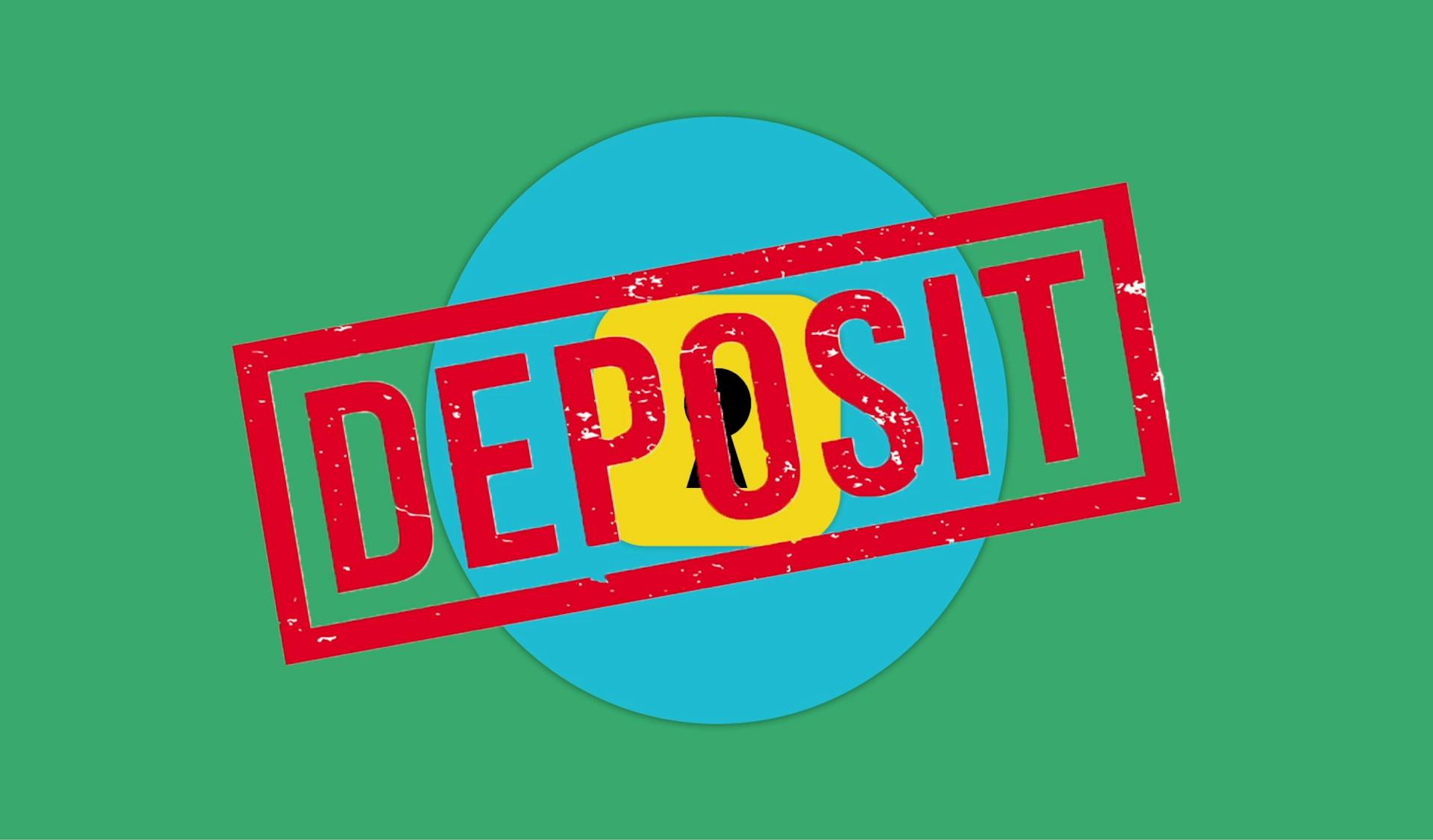
A collateral loan strategy can be a game-changer for your business, providing access to funds when you need them most.
By leveraging your business assets, you can secure a loan that helps you cover short-term cash flow gaps or invest in growth opportunities.
This approach can be especially useful for businesses with a strong asset base, such as property or equipment.
Businesses with a solid collateral loan strategy in place can enjoy increased financial flexibility and reduced reliance on external funding sources.
What is Collateral Loan Strategy
A collateral loan strategy is a type of business financing that's based on the value of a certain asset. This can include equipment, outstanding invoices, or even real estate.
Collateral loans are often used by companies going through a period of rapid growth and need extra funding to keep up with that growth, as well as to handle seasonal spikes in business.
The purpose of collateral is to encourage responsible borrowing while providing a security measure for lenders, which can result in lower interest rates for borrowers.

By using collateral, borrowers can often secure larger loans at lower interest rates, making this financing option ideal for significant purchases. However, if you don't repay the loan, the lender can seize your asset.
Home equity loans and HELOCs are examples of collateral loan strategies that allow homeowners to borrow against the equity they have built up in their properties, using their home as collateral.
Loans backed by collateral usually have lower interest rates since it reduces the lender's risk, but unsecured loans don't require collateral and typically have higher interest rates.
Discover more: Home Equity Loan to Pay off Student Loans
Types of Collateral Loans
Types of Collateral Loans can be broadly categorized into secured and unsecured loans. Secured loans require some form of security, which can range from gold jewelry to real estate.
For secured loans, the nature of collateral and the terms related to it can vary widely depending on the type of loan and the lender's policies. Some lenders find certain types of collateral less desirable, such as past due or subject to high dilution levels receivables, foreign receivables without insurance, slow-moving or specialized inventory, and single-purpose real estate or equipment.
Here are some examples of less desirable collateral types:
- Receivables that are past due or subject to high dilution levels
- Foreign receivables without insurance
- Inventory that is primarily slow-moving, specialized or consigned
- Single purpose real estate or equipment that can be difficult to monetize
Types Of Loans
There are two broad categories of loans: secured and unsecured. Secured loans require some form of security, such as a tangible asset, which can range from gold jewelry to real estate.
Unsecured loans, on the other hand, don't require collateral, making them a popular choice for many borrowers. Financial institutions define collateral as an asset you pledge to secure a loan, which can include your home, car, land, or other valuable property.
Secured loans often have lower interest rates since they reduce the lender's risk. In contrast, unsecured loans typically have higher interest rates due to the increased risk for the lender.
Loans backed by collateral can provide a lump sum or a revolving line of credit, depending on the type of loan. For example, home equity loans and HELOCs allow homeowners to borrow against the equity they have built up in their properties.
Here are some common types of collateral loans:
Recommended read: What Are Home Equity Loans Used for
• Home equity loans
• Home equity lines of credit (HELOCs)
• Inventory financing
• Equipment financing
• Business loans
Each of these types of loans has its own unique characteristics and requirements. For example, inventory financing allows businesses to get a loan based on the value of their inventory, while equipment financing can help businesses acquire the equipment they need to operate.
Discover more: Can You Put up Collateral for a Home Loan
Invoice Financing
Invoice financing is a type of loan that allows businesses to borrow a large percentage of the value of their outstanding invoices.
The loan is typically used to address cash flow shortages that occur when customers take too long to pay their bills. Businesses with billing cycles that are 30 days or longer may benefit from invoice financing.
Invoice financing is similar to invoice factoring, but it's not the same thing - it's a loan, while invoice factoring is a transaction where outstanding invoices are sold to a third party.
This type of financing can be a lifesaver for businesses that are struggling to make ends meet due to delayed payments from customers.
How it Works

A collateral loan works by requiring borrowers to pledge assets as security against the borrowed funds. The collateral can be any valuable asset, such as real estate, equipment, inventory, or even accounts receivable.
In the event that the borrower fails to repay the loan, the lender has the right to seize and sell the collateral to recover the outstanding debt. This added layer of security reduces the risk associated with lending, making collateral loans a popular choice for businesses.
Take a look at this: Collateral Security
How it Works
A collateral loan works by requiring borrowers to pledge valuable assets as security against the borrowed funds. The collateral can be anything from real estate to equipment, inventory, or even accounts receivable.
The lender has the right to seize and sell the collateral if the borrower fails to repay the loan. This added layer of security reduces the risk associated with lending.
Collateral loans are commonly used by businesses to secure financing. They provide a safety net for lenders, giving them more confidence in lending to businesses.
In the event of default, the lender can recover the outstanding debt by selling the collateral. This process is straightforward and helps lenders minimize losses.
Read Your Agreement
Reading your loan agreement is crucial before signing. You need to fully understand how collateral loans work and what's expected of you.
Double-check that you understand how payments work and what the lender will do if you fail to repay your loan. This includes understanding the interest rate and fees, which should be manageable for your budget.
You should confirm that the interest rate and fees are consistent with your understanding of the loan. This will help you avoid any surprises down the line.
If this caught your attention, see: How Loans Work
Does This Strategy Work for All?
This strategy doesn't work for all loans, as the availability and terms can vary based on the lender, type of life insurance policy, and specific loan purpose.
Life insurance can be used as collateral for personal loans, but only if the policy has cash value. This can be used to secure a personal loan for debt consolidation, home improvements, or medical expenses.
For more insights, see: Housing Loan Protection Insurance

Personal loans can have varying interest rates, terms, and loan amounts, so it's essential to compare different options and choose the one that aligns with your financial goals and repayment capabilities.
Business loans often have specific requirements, so it's crucial to check with lenders who specialize in business financing. These loans can be used for business expansion, capital expenditures, or operational needs.
Using life insurance as collateral for a loan can have risks, such as reducing the death benefit and possible policy lapse if the loan is not repaid. This is something to consider carefully before pursuing a collateral-backed loan.
Here are some key factors to keep in mind when considering a collateral-backed loan:
- Interest rates: Collateral-backed loans typically offer lower interest rates than unsecured ones, but the actual rates may vary based on market conditions and lender.
- Loan terms: Different types of loans have varying terms, repayment schedules, and conditions.
- Loan amount: The amount you need to borrow might influence the type of loan you pursue.
- Risk vs. reward: Understand the potential impact on your life insurance policy.
Pros and Cons
Collateral loans can offer some significant advantages to your business, but it's essential to understand the potential downsides as well.
One major pro of collateral loans is that they can be easier to approve, even if you have a bad credit score or credit history. This is because the loan is secured by an asset, making it less risky for the lender.
Broaden your view: Payday Loan Credit
You may also qualify for lower interest rates or fees with a collateral loan, as the lender has a clear asset to seize if you default on repayment. This can be a significant cost savings for your business.
However, there is a risk of losing the collateral if you fail to make your loan payments, which can be a significant setback for your business. Additionally, the approval process for a collateral loan can be longer than for other types of funding.
Here are some key pros and cons to consider:
It's also worth noting that collateral loans can be a good option for businesses that are just starting out or have a hard time qualifying for traditional loans. In these cases, a collateral loan can provide the necessary funding to get your business off the ground.
Pros and Cons
Collateral loans can be a good option for businesses with a hard time getting a traditional loan. They can be more accessible to smaller businesses going through periods of growth, even if they have a bad credit score or credit history.

A secured loan is less risky for the lender, which means you may be able to find lower interest rates or fees. This can be especially beneficial for businesses with strong growth potential.
With a collateral loan, you only lose the secured asset if you fail to make your loan payments. This can be a big relief for businesses that are sole proprietorships, where there is no differentiation between the owner's business finances and personal finances.
Here are some of the key pros and cons of collateral loans:
Some collateral loans may also offer the option to use the cash value of a permanent life insurance policy as collateral. This can be a valuable resource for businesses that need access to funds quickly.
Cons
If a life insurance policy isn't funded properly or underperforms, it could lapse prematurely. This means the insured may have to provide additional collateral.
Borrowing against the cash value of a permanent life insurance policy to repay a loan reduces the death benefit that will be paid out to beneficiaries upon the policyholder's death.

Here are some potential consequences of policy lapse and borrowing against a life insurance policy:
- Policy lapse: The policy may expire before the policyholder's death, leaving their beneficiaries with no coverage.
- Reduced death benefit: Borrowing against the cash value of a permanent life insurance policy reduces the amount of money available to beneficiaries upon the policyholder's death.
Eligibility and Requirements
To increase your chances of getting approved for a collateral loan, lenders typically require a strong credit history. You may also need to provide proof of income and details about the collateral you intend to use.
Lenders consider several factors when evaluating collateral, including the type and value of the asset, its marketability, and the potential for depreciation or obsolescence. They may also require a professional appraisal to determine the accurate value of the collateral.
Not all business loans require collateral, and some lenders may offer unsecured loans for smaller loans or those backed by strong creditworthiness.
Business Requirements: Core Insights
To get approved for a business loan, you'll need to provide proof of income, which can include past bank statements and business tax returns. This helps lenders see that your business is doing well.

Your credit score can still affect the loan's interest rate and terms, even with collateral. A higher score might give you access to better rates.
Lenders will want to see documentation showing that your business is doing well, which can include P&L statements and a strong inventory management system in place. This helps them assess your business's financial health.
Not all business loans require collateral, and some lenders may offer unsecured loans that don't require collateral. However, offering collateral can often improve the chances of loan approval and may result in more favorable loan terms.
Lenders may require a professional appraisal to determine the accurate value of the collateral. This helps them assess the asset's marketability and potential for depreciation or obsolescence.
To streamline the application process, it's essential to gather all necessary documentation, including proof of income, credit history, and details about the collateral. Organizing these documents can increase your chances of getting approved.
The approval process might be lengthy, so be prepared to wait.
Hierarchical Eligibility

Eligible collateral has a specific hierarchy that lenders follow when evaluating asset-based loans. This hierarchy is based on the liquidity of the assets.
Lenders prioritize assets that are easily valued and monetized, such as accounts receivable or inventory. These assets are typically commodities like metal, lumber, food, fuel, or oil.
The higher an asset is in the ranking, the more liquid it is. In general, the faster the asset's turnover, the more attractive it is as collateral.
Here's a breakdown of the typical asset preference ranking:
- Receivables
- Inventory
- Equipment
- Real estate
Assets with lower value or those subject to material shifts in consumer trends are often ineligible. For example, a wholesaler of apparel or technology-based products is considered less stable due to potential obsolescence.
Ideal Client Profile
To determine if you're a good candidate for using life insurance as collateral for a loan, let's take a look at the ideal client profile. Generally, a client must be considered insurable in order to obtain a life insurance policy, meaning they're in good health, have a strong financial history, and can show justification for needing the policy.

A good candidate for using life insurance as collateral for a loan typically lacks liquid assets or doesn't want to risk tying up existing assets, such as a home, to secure a loan. This strategy can be especially helpful for individuals who don't have access to liquid assets or want to keep their existing assets separate from the loan.
Using life insurance as collateral can serve two purposes: it can help secure a loan and provide financial security for additional beneficiaries, like family members.
You might like: Loan Using Home as Collateral
Getting Started
To get started with a collateral loan strategy, it's essential to shop around for loans and get preapproved. This will give you a clearer idea of the loan amount, interest rate, and repayment terms you're likely to qualify for.
Comparing offers from different lenders can help you secure more favorable terms, potentially saving you money over the life of the loan. Different lenders can offer varying interest rates, fees, and loan conditions, even for the same type of collateral.
Expand your knowledge: Collateral Loan Interest Rate

Getting preapproved also makes you a more attractive borrower to lenders since you’ve already taken the initial steps to qualify for a loan. This can give you an edge in the application process.
Before applying for the loan, you'll need to gather your documentation, which typically includes proof of income, credit history, and details about the collateral you intend to use. Organizing these documents can streamline the application process and increase your chances of getting approved.
Take a look at this: What Is a Loan Application
Alternatives and Considerations
Companies with significant working capital investments and low free cash flow may find an asset-based loan (ABL) a suitable option for growth or acquisitions.
Manufacturers, distributors, and retailers are good candidates for ABLs due to their substantial working capital investments.
An ABL can provide higher debt capacity than traditional commercial loans, often calculated as a three to four time multiple of EBITDA.
Compare Offers
When evaluating loan offers, it's essential to look at the interest rates. This can significantly impact the total cost of the loan over time.

Comparing loan offers from different lenders is a crucial step in the loan process. It can help you make a more informed decision and ensure you select a loan that best meets your financial needs and goals.
Interest rates are just one factor to consider when comparing loan offers. You should also look at repayment terms, which can include factors such as the length of the loan and the frequency of payments.
Fees and penalties for early repayment are other key factors to examine when comparing loan offers. These can add up quickly and impact your overall financial situation.
Understanding the details of each loan offer can help you make a more informed decision. This can save you money and reduce financial stress in the long run.
Is an ABL Right for You?
An ABL can be perfect for a company that's poised for rapid growth, acquisitions, or considering a shareholder buyout, as said by Dave Slavik, senior vice president for U.S. Bank Asset Based Finance.
Manufacturers, distributors, and retailers are good candidates for ABLs because they invest significantly in working capital and often produce relatively low free cash flow.
A company's traditional senior debt capacity is typically calculated as a three to four time multiple of EBITDA, but an ABL uses a borrowing base that can provide higher debt capacity.
The borrowing base for inventory typically ranges from 50-75%, and for accounts, it's usually 85-90%.
Many companies can generate more debt capacity via a borrowing base than with traditional commercial loans.
Secured Loans
Secured loans are a type of financing that uses collateral to secure the loan amount. This can be a valuable asset such as a car, savings account, or even a home.
Using collateral provides lenders with a sense of security, as they can seize the asset if you default on payments. Secured personal loans, for instance, require using a valuable asset as collateral to secure the loan.
A fresh viewpoint: Using a Trust as Collateral for a Loan
Secured loans can be used for various purposes, including debt consolidation, large purchases, and home improvements. Personal loans can be used for a variety of purposes, such as debt consolidation, large purchases, and home improvements.
A home equity loan gives you a lump sum to repay over a fixed term, using your home as collateral. Home equity loans generally have fixed interest rates, making monthly payments predictable.
Additional reading: Gov Debt Consolidation Loans
Asset-Based Lending
Asset-based lending is a financing option that goes beyond traditional collateral loans. It allows businesses to use a wide range of assets, including inventory, equipment, and even leased assets, to secure funding.
Unlike traditional collateral loans, you don't necessarily need to own an asset to get financing through asset-based lending. This is because it includes financing products such as invoice financing, equipment financing, and invoice factoring.
Asset-based lending is particularly useful for businesses with long billing cycles, such as those in the construction or manufacturing industries. This is because it can help them access cash quickly, even when customers are slow to pay their bills.

One key benefit of asset-based lending is that it allows businesses to borrow against the value of their assets, rather than just their cash flow. This can be especially helpful for businesses that have a lot of inventory or equipment on hand.
Asset-based lending can be a good option for businesses that need to finance specific assets, such as equipment or inventory. However, it's worth noting that the terms and conditions of asset-based lending can vary widely depending on the lender and the specific financing product.
Best Life Insurance Product
If you're looking to use a life insurance product as collateral for a secured loan, you've got options beyond just whole life insurance. Even term insurance can be used, but it depends on the policy's terms and conditions.
Term insurance can be used as collateral, even though it doesn't build cash value. A portion of the death benefit can still be assigned to the lender if the individual passes away prematurely.
Whole life insurance policies are often preferred for secured loans because they build cash value over time, making them more attractive to lenders. However, this comes with higher premiums.
Ultimately, the best life insurance product to use as collateral is one that aligns with your financial goals and needs.
Auto

Secured loans can be a great option for those who need access to larger sums of money. Secured personal loans require using something valuable as collateral, such as a car or savings account.
Auto loans are a common type of secured loan, where the vehicle purchased acts as collateral. The lender retains ownership until the loan is paid in full.
If you don't make your car loan payments, your lender can repossess the vehicle to recover losses. This can be a serious consequence, so it's essential to carefully consider your financial situation before taking out a secured loan.
Secured loans often offer more favorable interest rates and larger loan amounts than unsecured loans. This is because the lender has a secured interest in the collateral, reducing their risk.
A unique perspective: Auto Collateral Loan
Secured Personal
Secured personal loans are a type of loan that requires using something valuable as collateral. This can be a car, savings account, or other assets.
Secured personal loans can be used for a variety of purposes such as debt consolidation, large purchases, and home improvements. They often have lower interest rates and larger loan amounts compared to unsecured loans.
You can use a car as collateral for a secured personal loan, which means the lender retains ownership until you pay the loan in full. If you don't make the payments, your lender can repossess the vehicle to recover losses.
Secured personal loans can be a good option if you have a valuable asset and need access to a large sum of money. However, make sure you understand the risks and consequences of using your assets as collateral.
Check this out: Is a Vehicle Loan a Secured Loan
Financing Options
Equipment financing can be a lifesaver for businesses that need a lot of equipment or a particularly expensive piece of equipment, allowing you to get the equipment you need while avoiding a large upfront expense.
An equipment loan can be used to finance a wide range of equipment, from heavy machinery to office furniture.
Businesses need equipment to operate, and an equipment loan can help make that possible.
Equipment loans can be tailored to meet the specific needs of your business, with flexible repayment terms and competitive interest rates.
Equipment financing can be a cost-effective alternative to paying cash upfront for equipment purchases.
A different take: Do You Need Collateral for a Personal Loan
Frequently Asked Questions
What are the 3 C's of credit collateral?
The three C's of credit are Character, Capital, and Capacity. These factors, including credit history and collateral, determine an individual's creditworthiness.
Sources
- https://www.forbes.com/advisor/in/business-loan/what-is-loan-against-collateral/
- https://www.credibly.com/guides/collateral-loans/
- https://www.usbank.com/financialiq/plan-your-growth/loans/collateral-options-for-ABL-whats-eligible-whats-not.html
- https://www.rocketmortgage.com/learn/what-is-collateral
- https://www.modernlife.com/article/using-life-insurance-collateral
Featured Images: pexels.com
